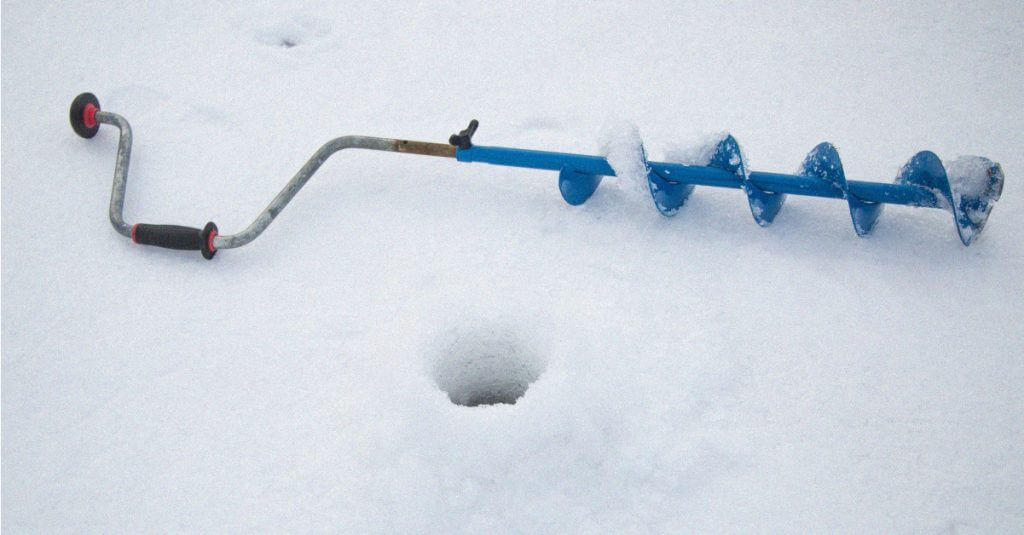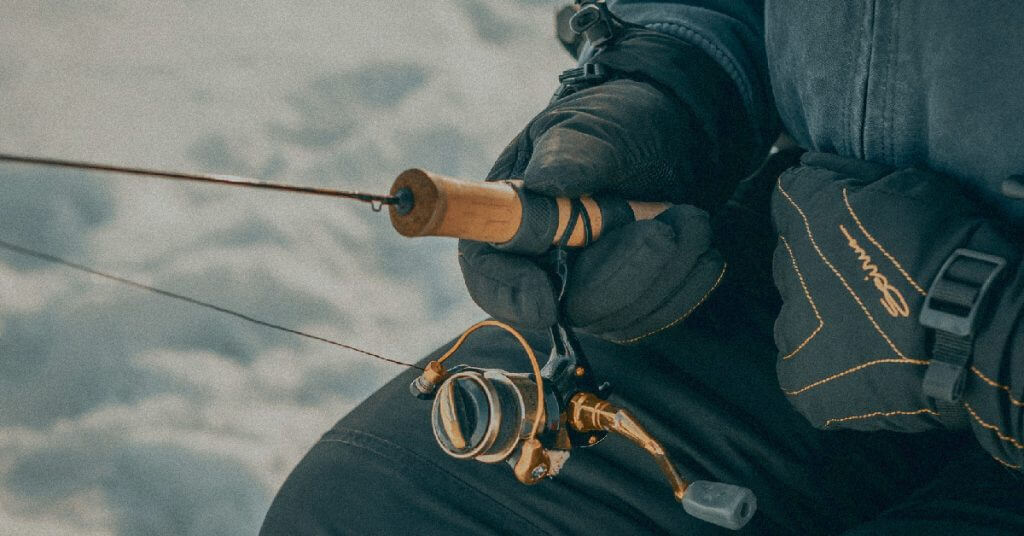Ice fishing is made easier with various pieces of equipment and gear. Ice chisels are one of those pieces. These tools are great for cleaning up holes, testing the ice, and breaking through refrozen holes.
While it’s a basic tool, it’s an important one so you shouldn’t just go out and buy the first thing you see.
Years ago, ice chisels were all we had. When my dad fished, there were no augers so you had to use the chisel to make your hole. Fun…
Nonetheless, ice fishing spuds are still an important piece of ice fishing equipment and this guide covers some of the best options available right now. Keep reading below for more!
Eskimo CH12 64-inch Ice Chisel
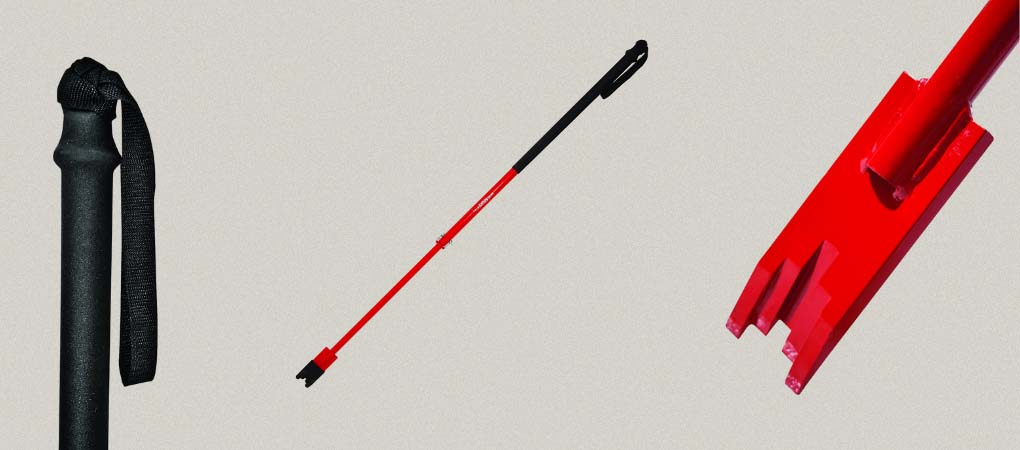
We all know Eskimo for producing some of the best ice fishing shelters and other gear. No matter what, whenever you find something to do with ice fishing from Eskimo, you take a second look at it.
This bottom half of the ice fishing chisel is fully welded to maximize durability but it is a two-piece rod joined by a Clovis pin in the middle. Each portion is about equal lengths around 32-inches.
The Eskimo CH12 64-inch Ice Chisel comes with a foam grip handle and ergonomic weight-to-length ratio to make it easier to use and less strenuous on the body.
The handle also features a tether rope so you can wrap it around your wrist while you’re working it for added support.
As far as ice chisels go, this is easily one of the best. It comes from a reputable brand that we trust, it’s durable, and unless you’re misusing it, we don’t see any reason why it would break or damage.
Bully Tools Tamping and Digging Bar
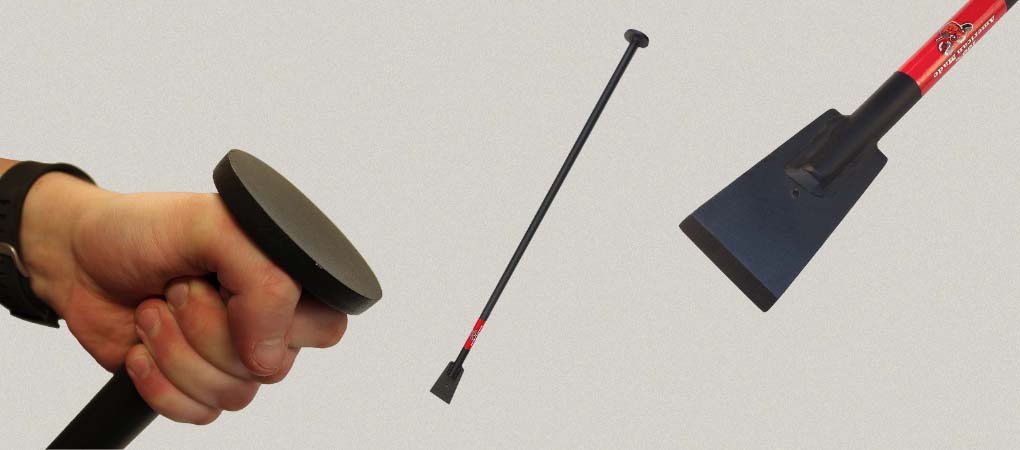
Right away you can tell that this ice fishing spud bar is a lot different from the previous chisel from Eskimo.
It has a totally different design, looks a bit more rugged, and the chisel portion of it is shaped much differently. Let’s talk about it.
It’s a 48-inch bar with a ⅜-inch head and it features a limited lifetime warranty. The word “limited” here likely means that using it for ice fishing isn’t allowed because that’s not one of its manufactured purposes. Bummer.
Nonetheless, the Bully Tools Tamping and Digging Bar is heavy-duty. The plate at the top end of it allows you to secure your hand there while putting your lower hand towards the bottom to very quickly rip through the ice.
The head-on this one is completely flat with a sharp edge so it’s not designed for jamming into a completely solid block of ice.
This chisel is much better suited for cleaning up your hole once you’ve drilled it. It’s also a good multipurpose tool which you know I love.
You can take it on the ice, bring it home to clear out the driveway, and even use it to chop up stubborn roots in your yard.
If you’re in need of a seriously heavy-duty tool and you don’t mind carrying a little extra weight around with you, this isn’t a bad option.
Nims Ice Fishing Spud
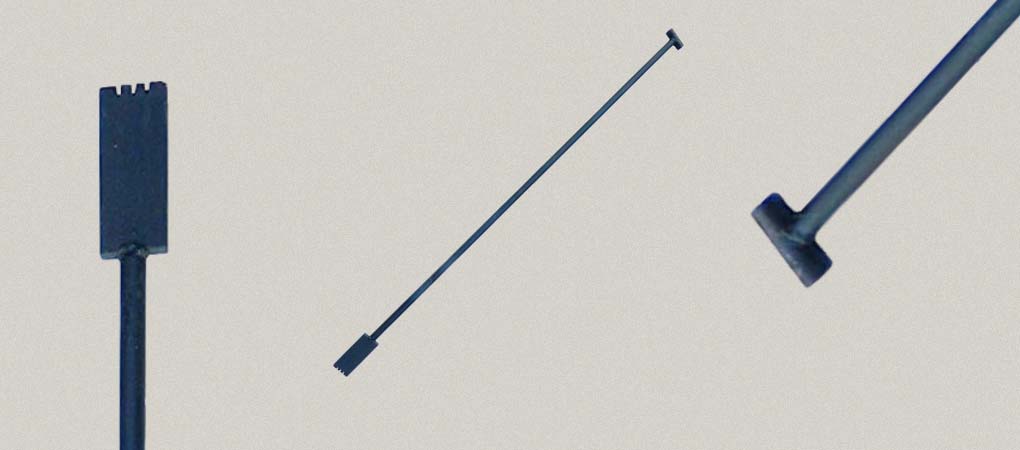
The Nims spud is designed for breaking through the ice without all the bells and whistles. This is an actual ice fishing spud designed specifically for this purpose.
The spud is 54-inches in total length with an approximate one-inch steel diameter on the shaft.
Unlike the Bully chisel, this one has a handle design at the end rather than a round base to rest your hand against.
This makes losing the chisel in the water a little more of a possibility. You’ll want to run some rope through it and tie it around your arm.
So, when you finally break through, you won’t have to worry about the chisel getting away from you.
Again, this is another nice multipurpose tool that you can take home with you to break through the ice on the sidewalk and in your driveway.
It’s a bit pricey and I’m not sure why. It could be because it’s manufactured in the USA. If that’s a selling point for you, I highly recommend this ice fishing chisel.
Eskimo CH7 52.5-inch Single Action Chisel
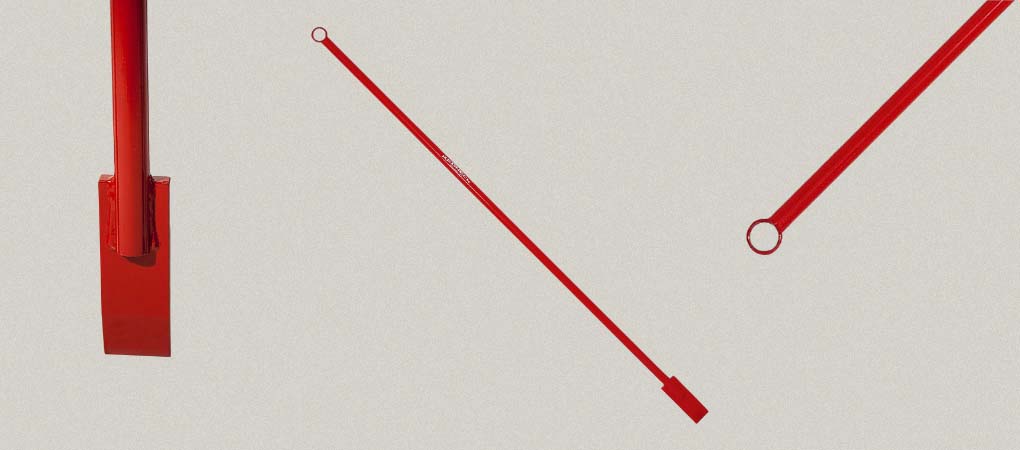
This Eskimo CH7 52.5-inch Single Action Chisel is more of a stripped-down version of the first one. It’s a little bit shorter, doesn’t offer a padded handle, and the chisel head is a bit more basic as well.
The advantage here is that you get a fully-welded design with no weak points, a shorter chisel for shorter people, and an area where you can rope it off so it doesn’t fall into the water.
Besides that, you’re still working with great Eskimo quality so you know it’s going to hold up. It’s a simple ice chisel that gets the job done without all the frills.
Eskimo CH9 19-inch Dual Action Chisel and Hammer-Style
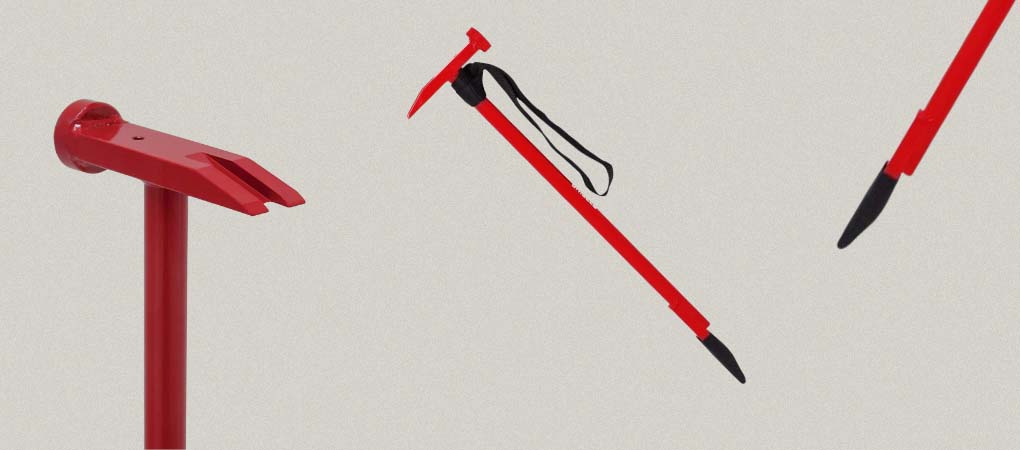
Here’s something a little different from Eskimo. This ice chisel is cool because it comes with a dual-action chipper head, a chisel on the bottom, and a hammer on the top. It’s a fully-welded, 19-inch one-piece chisel. It’s short.
You’ll likely be down on your knees working the hole which won’t give you the same type of leverage you’d get on your feet.
Another downside is that there’s nowhere to grip it so your hands will slide around making it more difficult to get through the ice.
I find this to be a better multipurpose bucket chisel that you can use to clean up the hole after you’ve drilled it. You can also use it to chip ice out of things like dog bowls and buckets.
Jiffy Mini Mille Lacs Ice Chisel
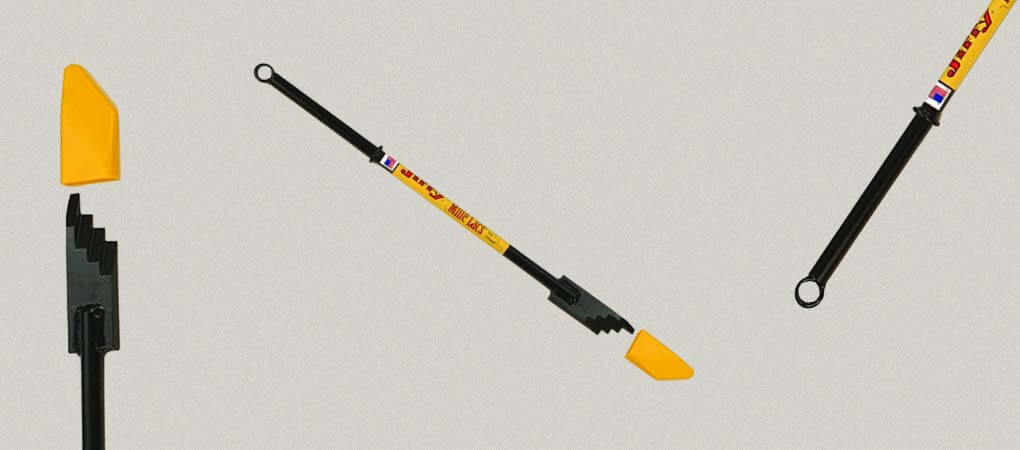
Here we have another option that shouldn’t serve as your main chisel, but it’s a great auxiliary tool that you can use for a variety of purposes.
It’s a one-piece ice chisel with a stepped teeth design that cuts through ice pretty quickly. It’s double the length of the Eskimo multipurpose chisel and it’s great for widening holes for fishing.
If you want to make sure you have a nice round hole, this is a solid option to work in conjunction with a larger tool like the Eskimo CH12.
How We Tested
While an ice chisel isn’t exactly a complicated or pricey piece of equipment, it’s important for drilling and maintaining an ice fishing hole. Here’s three things I look for in all my ice chisels:
- Length: To evaluate length, we measured the chisels for optimal reach through ice holes. We tested different lengths to find a balance between maneuverability and depth accessibility, considering various ice thicknesses.
- Weight: Our weight assessment involved measuring each chisel’s weight for comfortable prolonged use. We considered how fatigue could impact ice chiseling performance, particularly in cold conditions.
- Blade Type/Material: Testing blade types and materials involved gauging their effectiveness in cutting through ice. We examined durability, sharpness retention, and resistance to corrosion.
Chisels with different blade profiles were assessed for efficiency in both initial hole penetration and ice removal.
Why Use a Spud Bar in Ice Fishing?
If you’re just learning how to ice fish, you might not even realize there are chisels made specifically for ice fishing.
In the past, I’ve mostly relied on whatever I had around the house to chip away at any stubborn ice. I’d drill my hole and then take a small ice pick to clean up the hole.
Using an ice spud bar is a lot easier.
Remember at one time, these were the only options. If you went ice fishing, you had to chip away at the ice and hope it didn’t crack beneath your feet. Ice augers weren’t quite developed yet, but using a chisel has become less popular.
The main reason you’ll want to use a spud bar is to clean up your hole and help prevent it from refreezing.
Depending on the size of your auger blades, you may also need to use a chisel to widen the hole a bit to accommodate larger fish or for your tip-ups.
The final reason you’ll use a spud bar is to check the ice. As you’re walking around, you might find an area of ice that appears weaker than the rest.
Carrying your bar around with you will allow you to extend it and give the ice a few good whacks to see if it holds up. Of course, you can only do this with the longer bars.
All-in-all, it’s an essential tool for ice fishing and something you should never leave home without.
How to Use an Ice Chisel
So, how do you use it? Do you go out there and just start chipping away at the ice without a plan? That’s an unnecessary waste of energy and resources.
Believe it or not, you can work through the ice with a chisel alone, it’s not easy, but it can be done.
First, let’s talk about checking the ice.
If you’re using the chisel to check ice thickness, you want to do so by giving the ice a few good downward hits.
If you can see the water moving below or if water passes through the ice, you’ll want to be careful because it might not be thick enough.
This video does a nice job explaining how thick ice needs to be in various scenarios. The general rule of thumb is that four inches are required for ice fishing.
If you notice waves beneath the ice or you see water coming through, it’s likely less than that and should be avoided.
You can also use the chisel for starting a new hole. A lot of ice anglers will use this strategy for dropping an ice fishing fish finder transducer through it.
You won’t need as wide or clean of a hole for this purpose so it’s good for poking around the lake for opportunities.
How to Choose the Best Ice Chisel for Ice Fishing
This is a simple purchase. There’s not a lot to these chisels, there’s no technology involved, and they’re basically just a metal bar. Don’t overthink it, but here are a few things to consider before making the purchase.
Length/Weight
Chisel sizes range from as short as a foot to as long as five feet. The size you get will depend primarily on your size and how you intend on using it.
If you’re using it to feel out the ice, you’ll want to make sure it’s long enough so you don’t have to get too close to the risky sheet.
If you’re using it primarily to grind through the ice, then a two-foot chisel wouldn’t hurt if you don’t mind working from your knees.
As for weight, the weight will be based on the length in many ways. Some chisels like the Bully bar are naturally heavier because they’re designed with a thicker diameter for added durability.
Most ice fishing spud bars will weigh between 10-11 pounds.
Keep in mind that you need to lug it out there and adding extra dead weight doesn’t help the cause.
Blade
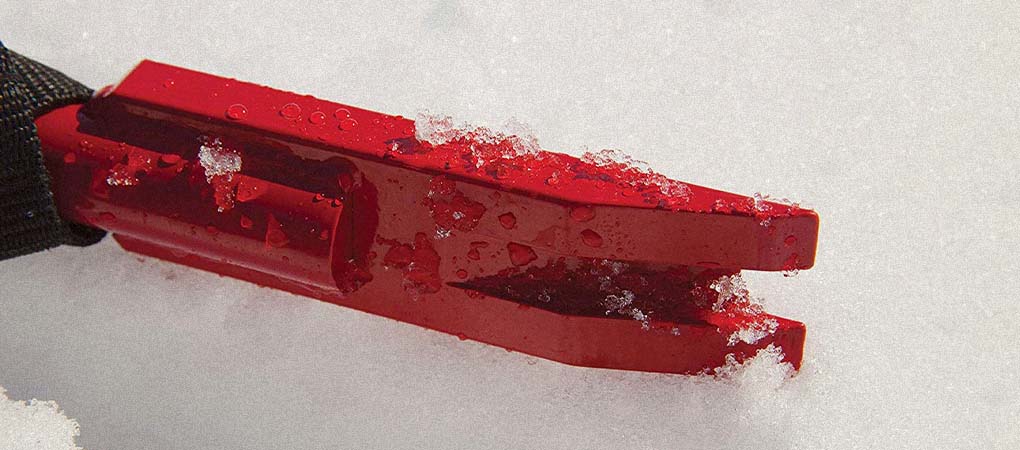
You have a few different options when it comes to blade design. The Eskimo chisels have a step-style blade which is preferred by most experienced ice anglers. This design is great for chipping through thick ice to access the water below.
The flat-bladed chisels aren’t as good for that purpose because they’ll bend and crack more easily. These are better for general use.
Use the flat blades for cleaning up holes, clearing out ice, and other purposes back at home. Perhaps you could take up a part-time job in ice carving?
Handle
The handle on your chisel is more important than you think. It’ll play a role in the overall leverage you’re able to get but it’ll also make securing the chisel much easier.
Most chisels will have a handle made of the same material that the bar is made of, but that’s not the case with all of them.
The Eskimo CH12 comes with a padded handle which makes it easier on your hands while also offering you an area to grip. Some chisels have wooden handles and some are there just for aesthetics.
I suggest trying to find one with a padded handle because the pads will reduce the vibrations so it won’t sting once your hands get tired. Trust me, it’s more important than you think.
One or Two Piece?
Just like I prefer my ice fishing rod to be one piece, I also want my chisel to be one-piece. When you’re putting multiple pieces together in any situation, you’re creating weak points and opportunities for something to get damaged.
One-piece chisels are stronger, more durable, and better at breaking the ice because you can put a lot more pressure on them without them bending and snapping.
That said, if you’re short on room and you’re focused on easier transportation, then a two-piece chisel might be the way to go.
I don’t know anyone’s exact situation so only you can decide what’s right for you. Don’t shoot the messenger!
Added Features
As I’ve said, ice fishing chisels aren’t exactly a complicated purchase. You want durability, the right length, and the right sharp edge.
If you can find those things, you’ve got yourself a good purchase. But, there are a few added bonuses you can look out for.
A tamping bar is one of these things. The Bully bar that I reviewed has one of these and it serves two purposes. First, it’s great for backing your hand up against because it will prevent your hand from sliding off the bar.
Second, the tamping tool works well for packing down soft material such as dirt and sand. Multipurpose features are always a bonus for me.
Some bars come with a built-in lanyard that you can wrap around your arm to prevent the spud bar from sliding through the hole and into the water.
We also looked at one that had a variety of extra features like a hammer and pry-bar tool.
While many of these features won’t necessarily help with cutting or cleaning a hole, you can make the most out of your ice fishing chisel by choosing features that are useful in your everyday life.
Additional Ice Fishing Gear Recommendations
While an ice chisel is nice, there are plenty of other things you’ll want to have on the ice. Here are some recommendations.
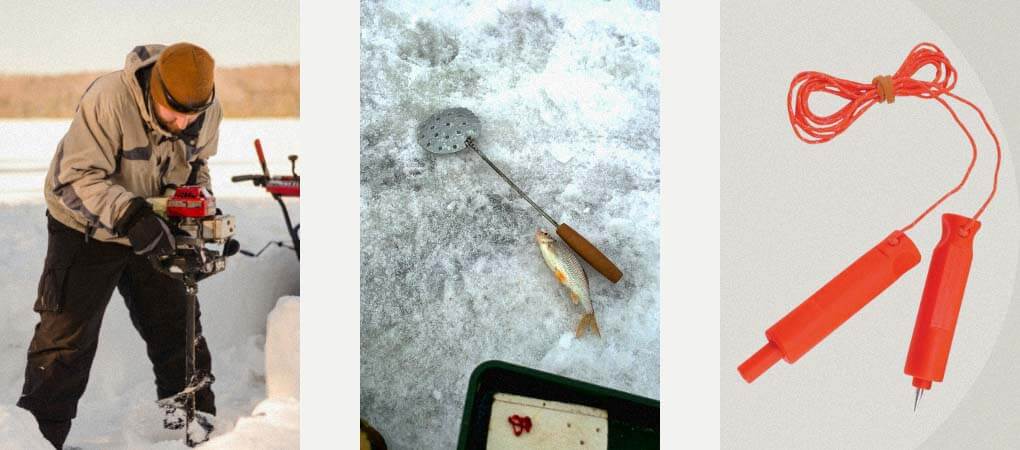
Ice Fishing Auger
The auger is the missing piece of the puzzle in this article. You’ll want to make sure you have a high-quality ice fishing auger like the Ion Electric Auger to ensure you drill a nice-sized hole.
From there, you can use the ice chisel to clean it up and widen it out if you have to.
Click here to read my full review of the best ice fishing augers.
Ice Fishing Skimmer
A skimmer is another one of those tools that go hand-in-hand with the ice fishing spud. This tool is used to clean the slush out of the hole as it refreezes. It comes with a chipper on one end that you could use to break through really thin ice.
If you’ve left the hole for a couple of days, you can use the ice chisel to break through and then scoop everything out using the skimmer.
Ice Safety Picks
Safety is the name of the game on the ice and if you accidentally fall in, you need a way to get out.
A lot of people think they’ll be able to quickly pull themselves up but the shock from the cold paired with the fact that you’re wet will make it very difficult to get a grip on anything.
Ice safety picks allow you to crawl on top of the ice or you can throw one to someone else and they can use them to pull you out. These are very important tools to have on you at all times.
Final Thoughts
I hope you got something out of this review of the best ice chisels. While they’re a simple purchase, it’s always important to shop carefully rather than waste your time on a product that isn’t going to work right.
We pride ourselves on providing unbiased and honest reviews of the best fishing gear online. Based on that, I recommend the Eskimo CH12 64-inch Ice Chisel as the best option for ice fishermen.
The handle is great, the length/weight makes sense for testing the ice, and it offers the right shaped head for really cutting through the ice.
Pick it up and test it out for yourself. Good luck out there!



